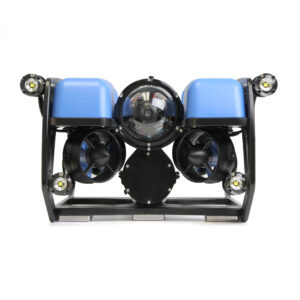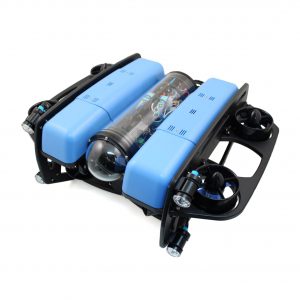What is an Underwater ROV?
By Rusty
ROVs are one of numerous vehicles used to explore the water world around us, so let’s start with the basics…
What does ROV stand for?
An ROV is a Remotely Operated Underwater Vehicle, also sometimes known as an underwater drone or underwater robot. ROVs can explore the subsea world while the operator, or pilot, remains comfortably at the surface. Without ROVs, humanity’s ability to explore and work in the oceans is limited since SCUBA divers rarely go deeper than one hundred meters and human-carrying submarines are expensive and rare.
A very brief history of ROVs
The first ROV ever built was the Poodle made in 1953 by Dimitri Rebikoff, a French pioneer in dive equipment and photography. The Poodle was an unmanned adaptation of his dive scooter with a tether and surface controls.
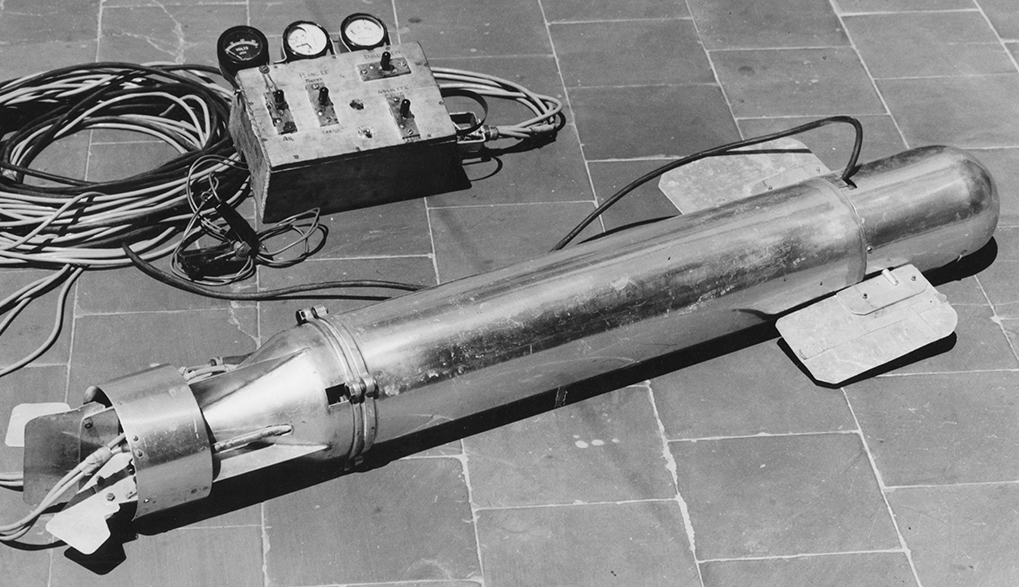
The world's first ROV, the Poodle. (Credit: Rebikoff-Niggeler Foundation)
The U.S. Navy started using ROVs in the 1960s for recovery of underwater equipment and continued to advance the technology. By the 1980s there were more than 500 ROVs around the world, many of them being used in commercial applications. Since then, ROVs have become common in a wide range of industries and there are tens of thousands of ROVs in use around the world.
The components of an ROV system
ROVs come in all shapes and sizes to address different needs, but they generally have some common elements.
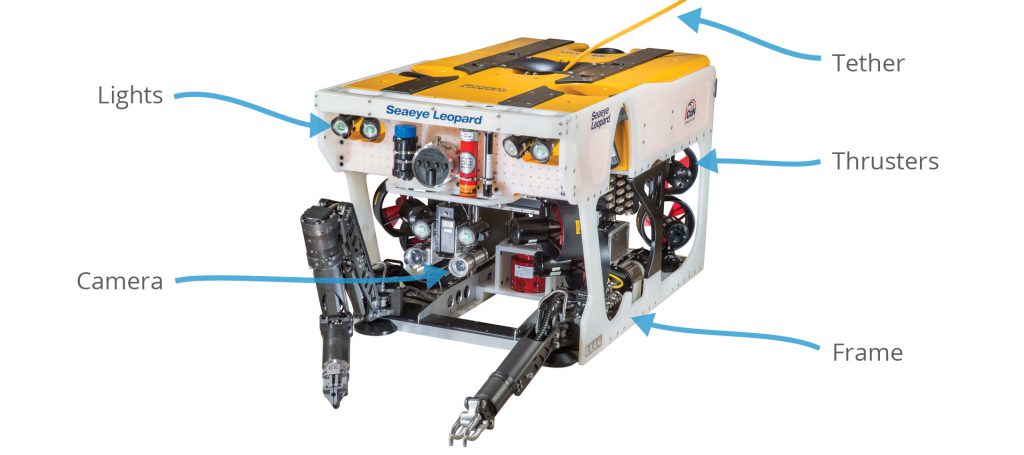
An ROV, showing some of the key components. This work class ROV has a LOT of other components as well. (Image credit: Saab Seaeye)
Thrusters. The thrusters are electrically or hydraulically powered propellers used to maneuver the vehicle. There are almost always multiple thrusters to provide movement in multiple directions.
Camera. Since the vehicle travels deep underwater, the only view that the pilot has is through the onboard camera, which must be able to provide an image with low-latency.
Lights. The lights provide illumination for the camera underwater. Sunlight disappears rapidly underwater and many ROV missions occur at depths that are normally in complete darkness.
Tether. Nearly all ROVs have a tether that carries electrical power and/or signals to the surface so that the pilot can control the vehicle and see the camera. Radio waves don’t travel far through water, so it’s not possible to operate an ROV with modern wireless technology. There are acoustic and optical modem technologies that may someday enable wireless operation.
Frame. The frame provides a structure to attach the thrusters, camera, lights, tether, and other components of the ROV. Most ROVs are built with an open rectangular frame that makes it easy to build and modify, but some ROVs are built with highly specialized frames to reduce drag, improve appearance, or perform a special mission.
Pilot Controls. The surface controls can range from something that looks like the control room for a spaceship to something as simple as a smartphone. In any case, the surface controls provide a physical interface for the pilot to control the vehicle and a display of feedback from the vehicle including the camera view.
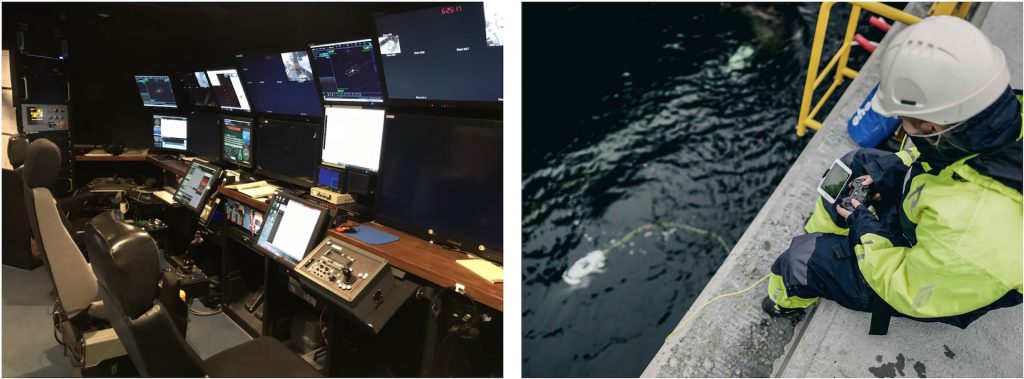
The control room for a large science ROV, the Ventana (left), and the mobile control system for a small, portable ROV, the Blueye Pioneer (Credit: Blueye Robotics).
There are many other possible components on ROVs including sensors, robotic arms, sampling devices, actuators, tools, and sonars, but nearly every ROV has these core components.
What are ROVs used for?
ROVs give you unique access to the underwater world, a place that humans can’t easily explore alone. There are countless ways to use underwater ROVs but the following are a few of the most common applications where ROVs are used.
ROVs in Exploration and Science
The world’s ocean is the most vast but among the least accessible frontiers on earth. The average ocean depth is over 4,000 m (13,000 ft) and when you learn the challenges to reaching that depth with a manned or unmanned vehicle, it’s clear why we have explored so little of it. ROVs provide one of the best tools to reach, explore, and study the ocean from its coastal shallows to its greatest depths. They are used by the world’s leading research institutes like the Woods Hole Oceanographic Institution (WHOI), the Monterey Bay Aquarium Research Institute (MBARI), the Schmidt Ocean Institute (SOI), and others to film, measure, catalog, and understand the creatures and environment of the ocean.
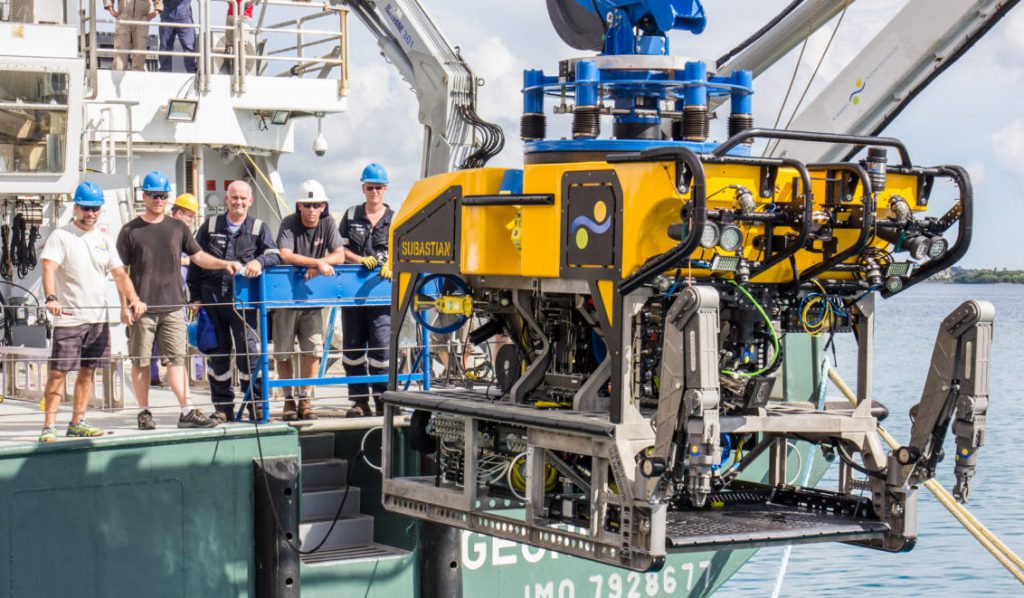
An ROV (Subastian) aboard a research vessel used to explore and film the ocean depths.
In recent years, some of these organizations have made their dives available to the public via livestreams! Here are a few of our favorites to watch:
- Live from ROV SubBastian on the R/V Falkor (Schmidt Ocean Institute)
- Live from ROV Hercules on the R/V Nautilus (Ocean Exploration Trust, Dr. Bob Ballard)
- Live from the Deep Discoverer ROV on the Okeanos Explorer (National Oceanographic and Atmospheric Administration, NOAA)
These live streams aren’t running all of the time, but they’re fairly active and worth adding to your browser favorites!
Exploring the ocean isn’t limited just to institutions – there are small ROVs, like our BlueROV2, that are accessible to students, scientists, and researchers that allow them to easily and safely reach depths to study ocean creatures, deploy instruments to measure water parameters, and collect samples to take back to the lab. ROVs are also used for exploration of shipwrecks, plane crashes, sunken cities, abandoned mines, caves, and just about anywhere else underwater.
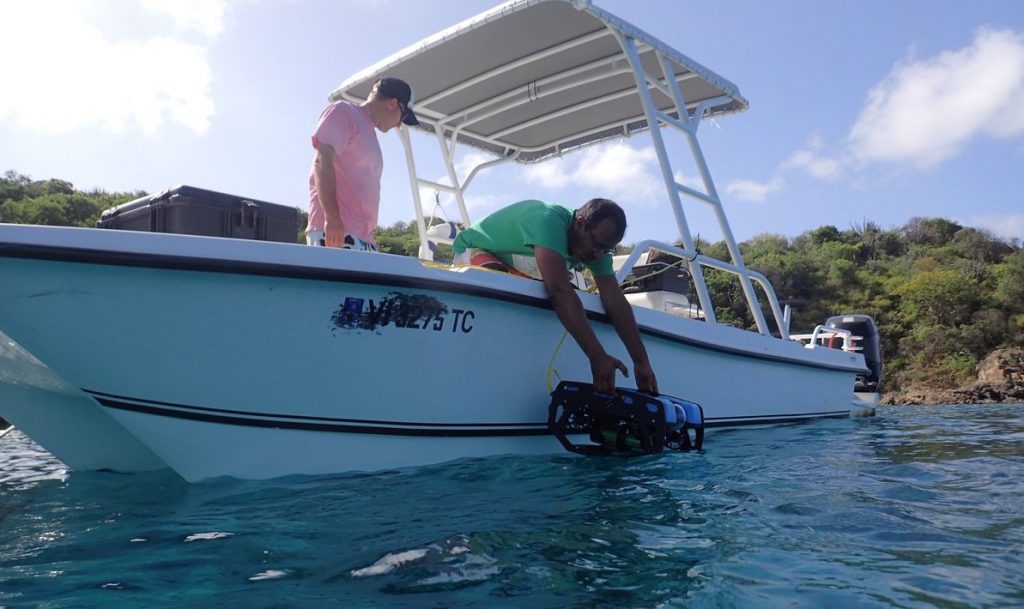
A BlueROV2 being deployed with a hydrophone sensor to record sounds on the reef. (Credit: Yogesh Girdhar, WHOI)
ROVs in STEM Education and Academic Research
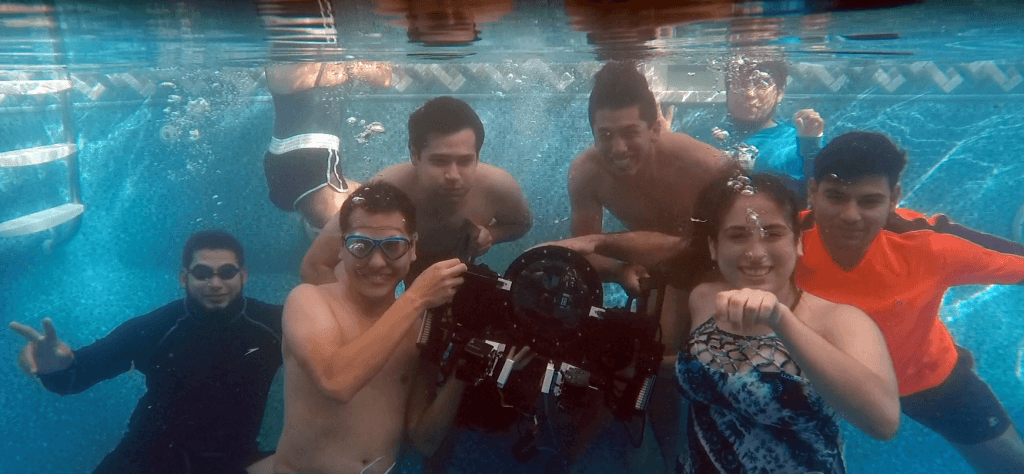
A student team (and their ROV) at an underwater robotics competition.
ROVs have become popular STEM education and other academic research applications through ROV competitions, classroom ROV kits, and robotics programs. Building and operating ROVs uniquely combines elements of physics, science, engineering, programming, oceanography, and biology. ROV kits and curriculum like the SeaPerch are a valuable tool and learning experience in the classroom. For older students in high school and beyond, there are a number of underwater robotics competitions that challenge students to design, build, and compete with an ROV. Here are some of the most popular underwater robotics competitions:
- MATE ROV Competition, with over 800 teams, 6,000 students, and 36 worldwide regional competitions
- SeaPerch Challenge, sponsored by AUVSI and the US Navy
- RoboNation RoboSub Competition, focused on advanced autonomous robotics
- Singapore AUV Challenge (SAUVC), focused on advanced autonomous robotics
- European Robotics League, involving aerial, ground, and underwater robotics
ROVs are also commonly used in university level research for marine biology, oceanography, and autonomous systems development. Advancing the technology and applications of ROVs, and turning them into autonomous underwater vehicles (AUVS), will allow us to explore and study the ocean in new and better ways.
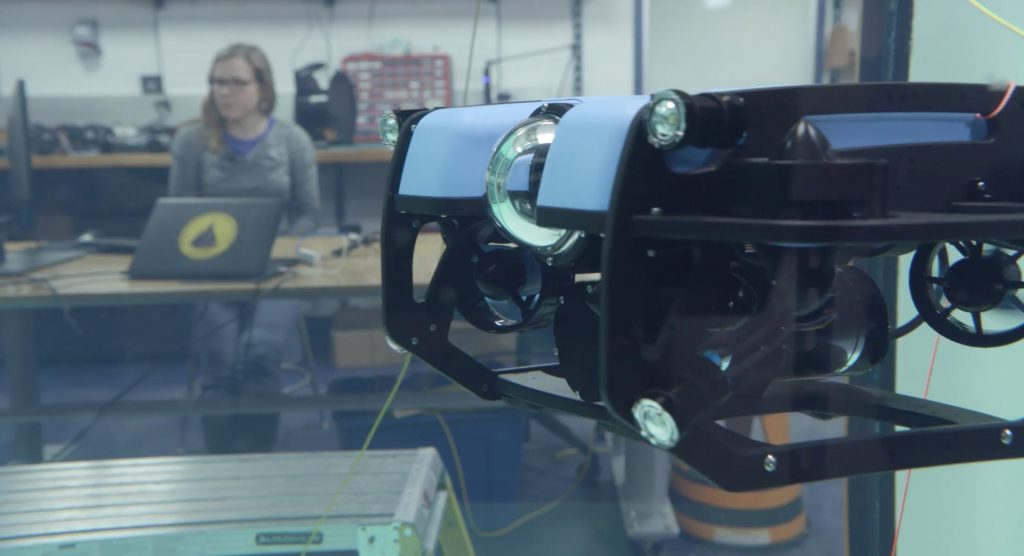
A BlueROV2 at Woods Hole Oceanographic Institution learning to be autonomous!
ROVs in Underwater Inspection

An ROV's view of a ship propeller during a routine inspection. (Credit: Libre Mare)
The most common commercial application for ROVs is for underwater inspection and work. Large ROVs are used for many difficult tasks in the offshore oil and gas and offshore wind industries while smaller ROVs are used in a wide range of industries including aquaculture, infrastructure inspection, water tank inspection, ship hull inspection, pipe inspection, wastewater treatment inspection, commercial diving, and more. Using robotics makes the dull, dangerous, and dirty jobs a lot faster, safer, and cleaner!

Using an ROV to inspect a net in the aquaculture industry.
ROVs in Search and Rescue and Port Security
ROVs are often used by police and fire departments for search and rescue missions to find missing people, boats, automobiles, and any other sunken objects. Used with a robotic gripper, they can be used to recover objects or even victims in the most unfortunate cases.
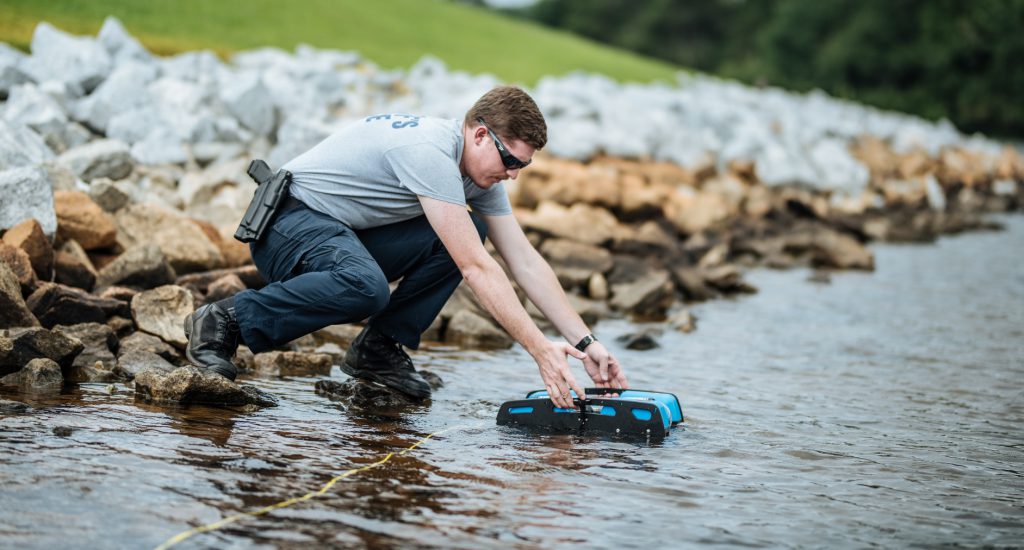
ROVs are also used by the military and port security to inspect underwater infrastructure and look for contraband, explosive devices, and submerged evidence. By using ROVs, it’s possible to accomplish these tasks without endangering a human diver.
ROVs in ______________
Above are just a few of applications that ROVs are used for but there are so many more. Here are links to a few of our favorites if you’re interested in exploring further!
- ROVs used to capture invasive lionfish in the Caribbean
- ROVs used to film divers and take “underwater selfies”
- ROVs used by NASA to someday explore underwater on other planets

An underwater vehicle that follows divers and films them. (Credit: iBubble, Anais Dominici)
How do I get started with ROVs?
Learning about ROVs and how to use them can be a steep (but fun!) learning curve. We have some suggestions on further readings and resources if you’re interested in going further!
Books
- Christ, Robert, and Robert Wernli Sr. 2014. The ROV Manual: A User Guide for Remotely Operated Vehicles. Second Edition. Oxford: Butterworth-Heinemann. Available here on Amazon.
- Moore, Steven, Harry Bohm and Vickie Jensen. 2010. Underwater Robotics: Science, Design & Fabrication. Monterey: Marine Advanced Technology Education (MATE) Center. Available in the Blue Robotics Store.
Resources for Hobbyists, Explorers, and DIY ROV Builders
- Blue Robotics Forum Community
- Homebuilt ROV Forum
- Which Underwater Robotics Competition is Right for You?
Resources for Using ROVs in Commercial Applications
- Blue Robotics Distributors, who can help with customization and training
Related Guides
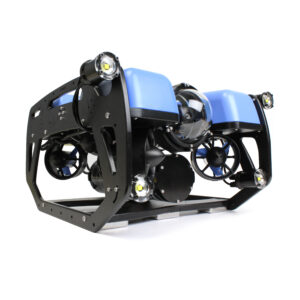
BlueROV2 Assembly
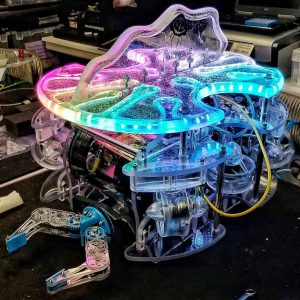
Using Blue Robotics Components on a Competition ROV
Related Products
Authors
Rusty
Rusty is the founder and CEO of Blue Robotics. His background is in engineering but he likes to be involved in everything at Blue Robotics!

